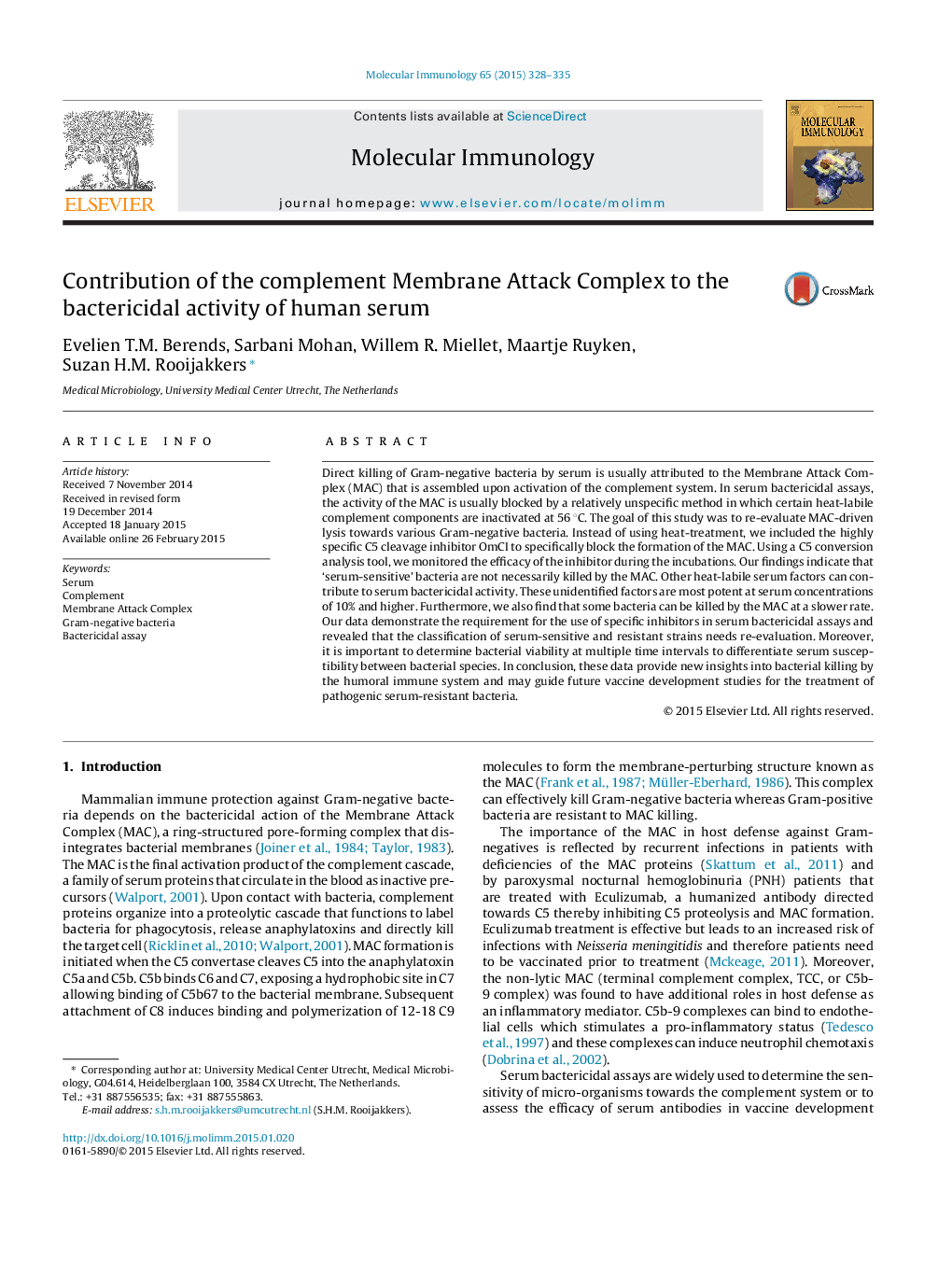| کد مقاله | کد نشریه | سال انتشار | مقاله انگلیسی | نسخه تمام متن |
|---|---|---|---|---|
| 2830793 | 1163754 | 2015 | 8 صفحه PDF | دانلود رایگان |
• Gram-negative bacteria that are sensitive to human serum are not necessarily killed by the MAC.
• The MAC can kill Gram-negative bacteria at different rates.
• Specific MAC-inhibitors, like OmCI, are essential in evaluating the contribution of MAC towards serum bactericidal activity.
Direct killing of Gram-negative bacteria by serum is usually attributed to the Membrane Attack Complex (MAC) that is assembled upon activation of the complement system. In serum bactericidal assays, the activity of the MAC is usually blocked by a relatively unspecific method in which certain heat-labile complement components are inactivated at 56 °C. The goal of this study was to re-evaluate MAC-driven lysis towards various Gram-negative bacteria. Instead of using heat-treatment, we included the highly specific C5 cleavage inhibitor OmCI to specifically block the formation of the MAC. Using a C5 conversion analysis tool, we monitored the efficacy of the inhibitor during the incubations. Our findings indicate that ‘serum-sensitive’ bacteria are not necessarily killed by the MAC. Other heat-labile serum factors can contribute to serum bactericidal activity. These unidentified factors are most potent at serum concentrations of 10% and higher. Furthermore, we also find that some bacteria can be killed by the MAC at a slower rate. Our data demonstrate the requirement for the use of specific inhibitors in serum bactericidal assays and revealed that the classification of serum-sensitive and resistant strains needs re-evaluation. Moreover, it is important to determine bacterial viability at multiple time intervals to differentiate serum susceptibility between bacterial species. In conclusion, these data provide new insights into bacterial killing by the humoral immune system and may guide future vaccine development studies for the treatment of pathogenic serum-resistant bacteria.
Journal: Molecular Immunology - Volume 65, Issue 2, June 2015, Pages 328–335
